#fashion plate
Text
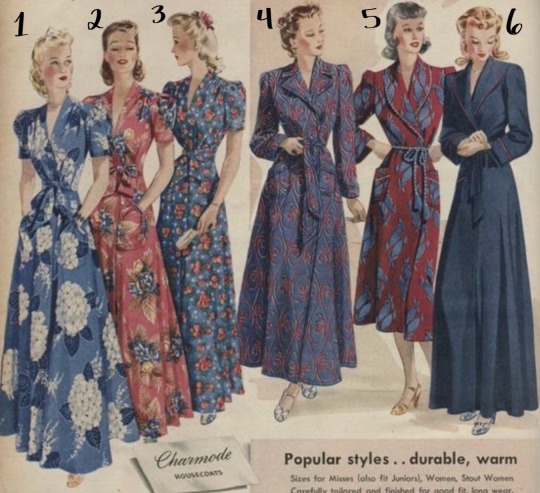
#historical fashion polls#fashion poll#historical dress#historical fashion#dress history#fashion history#fashion plate#20th century fashion#mid 20th century#early 20th century#20th century#1940s style#circa 1940#1940s fashion#1940s#circa 1942#circa 1943#housecoat
100 notes
·
View notes
Text

La Mode illustrée, no. 16, 16 avril 1871, Paris. Toilettes de Mme Fladry, 27, F.9 Poissonière. Collection of the Rijksmuseum, Netherlands
#La Mode illustrée#19th century#1870s#1871#on this day#April 16#periodical#fashion#fashion plate#color#rijksmuseum#dress#bustle#Modèles de chez#Madame Fladry
30 notes
·
View notes
Text
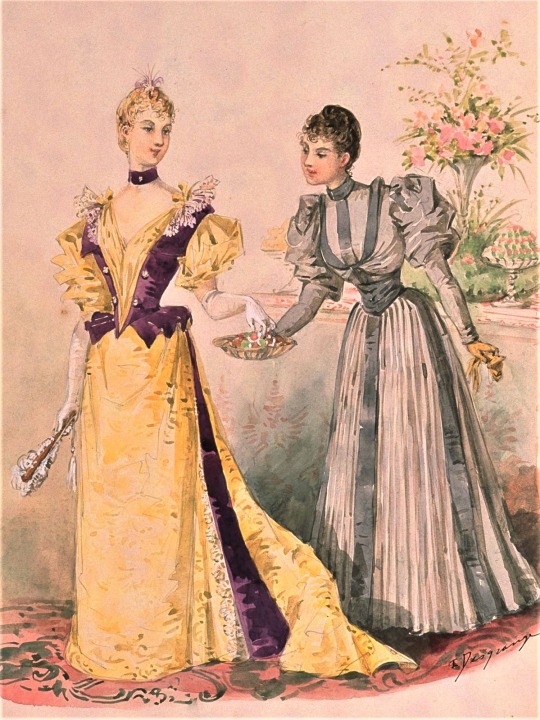
Le Mode Illustree 1894
#fashion plate#histocial magazine#fashion magazine#historical fashion#fashion#historical#history#historical clothing#historical dress#long dress#textiles#victorian#victorian era#1800s dress#1800s art#1800s fashion#19th century fashion#19th century#late 19th century#1890s dress#1890s fashion#high fashion#gown#old fashioned#victorian clothing#fashion dress#the gilded age
20 notes
·
View notes
Text

Mario Reviglione (Italian, 1883-1965) • Portrait in black of Mrs. Levi Muzzani • 1916
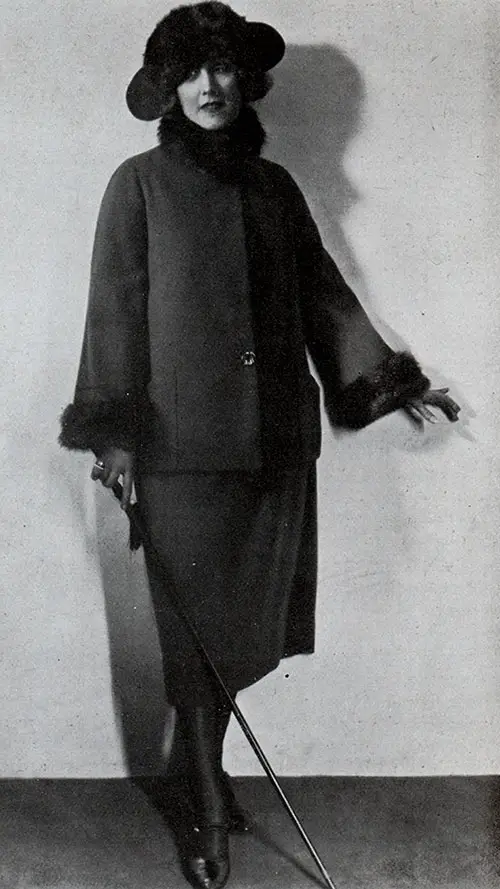
Fur was everywhere in the 20s. Both men and women were resplendent in fur. Fur-trimmed collars and cuffs adorned coats and jackets. Full-length all-fur coats of mink or sable were only affordable to the upper classes. People of lesser means made do with squirel or beaver.

Lord & Taylor silk coat, lined with fox fur • 1920s
Wrap coats such as the one above were very popular, both for day and evening. It's not clear if the one above was meant to be worn as an evening coat but I suspect it was.
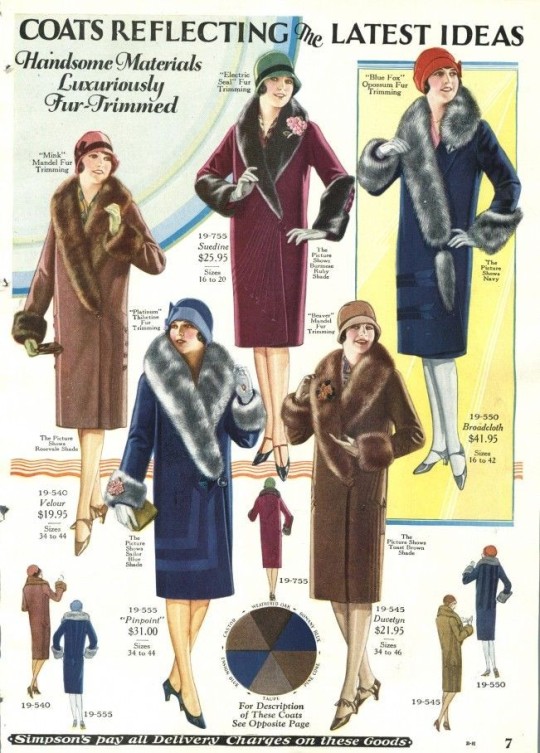
These fashion plate examples are more accurate examples of fir-trimmed coats worn in daytime.
Fur was popular in previous eras of fashion history as well. And, of course, remained popular for many decades to come. Thankfully, this trend was called to attention in the 1980s for its unnecessary cruelty.
#art#fashion history#art history#painting#portrait#fine art#1920s fashion#the resplendent outfit blog#fur fashion#1920s coats#women's fashion history#roaring 20s#fashion plate#mario reviglione#italian artist#oil painting#1920s photos
21 notes
·
View notes
Text
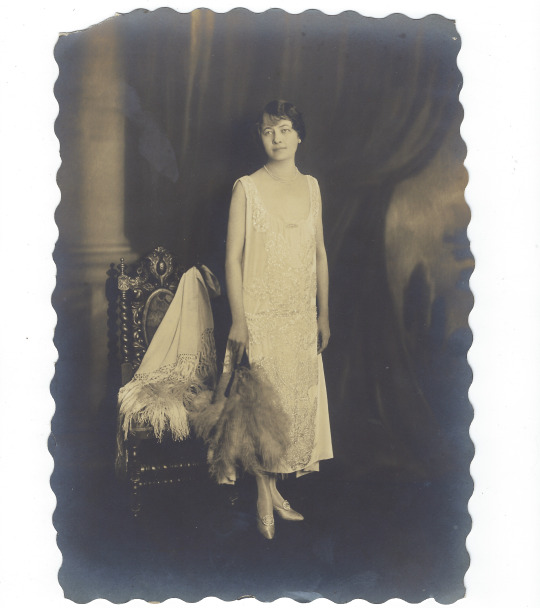
Fashion Plate: Larger 6 1/2" x 9 1/4" photo of a flapper-era woman in a beaded dress with feather fan.
https://markonpark.etsy.com/listing/1453849369
430 notes
·
View notes
Text

Très Parisien, 1923
#1923#1920s#history#historical#fashion#fashion history#historical fashion#1900s#1920s fashion#1920s dress#1920s art#20th century fashion#early 20th century#20th century#history tag#fashion plate#antique#vintage#vintage fashion#vintage style#vintage illustration#antiquebee
437 notes
·
View notes
Text


1915 McCall patterns Illustrating the new coat lines in a suit of tweed
1915 Simplicity without severity in coats and dresses
(New York Public Library)
383 notes
·
View notes
Note
I've seen a post you've reblogged and added to, among many things about women showing nipples. Can you recommend any ref material (articles, videos, etc.) are share your knowledge about this? Cause I'm curious about that, as nowadays going out in a shirt without a bra makes you indecent, while in like 90s it was okayish? I wonder how it was in previous centuries.
There is a really cool academic paper about bare breast dresses in 17th century England specifically. I think anyone can read it by creating a free account.
Abby Cox also has a good video about the cleavage during the past 500 years in which she goes through also the nip slip phenomena.
I don't have other sources that specifically focus on this subject, though many sources about specific decades touch on it, but I do have my primary source image collection, so I can sum up the history of the bare nipple.
So my findings from primary source images (I could be wrong and maybe I just haven't found earlier examples) is that the Venetians were the first ones to show the nipple for courtly fashion. At the same time in other places in Europe they sported the early Elizabethan no-boob style that completely covered and flattened the chest. In the other corners of Italy the necklines were also low but less extreme. Venetian kirtle necklines dropped extremely low as early as 1560s and they combined extremely sheer, basically see-through partlets with their kirtle. First example below is a 1565-70 portrait of a Venetian lady with the nipples just barely covered waiting slip into view with a movement of arm. There was an even more extreme version of this with the kirtle being literally underboob style, still with a sheer doublet. Though I believe this was not quite for the respectable ladies, since I have only seen it depicted on high class courtesans. They were not exactly respectable ladies, but they did have quite good social position. The second example is a 1570s depiction of a courtesan, which is revealed by the horned hairstyle. By the end of the century this underbust style with only see through fabric covering breasts, had become respectable. In the last example it's shown on the wife of the Venetian doge in 1597.
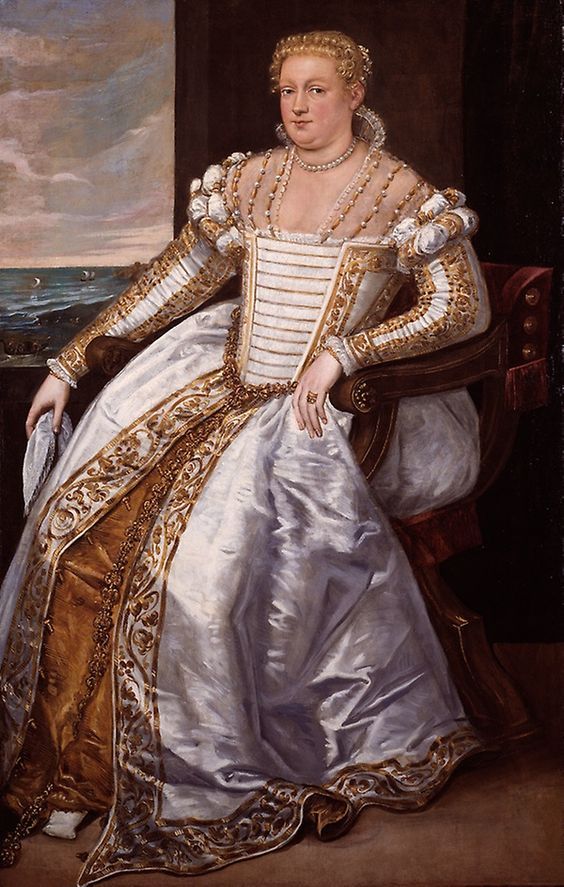
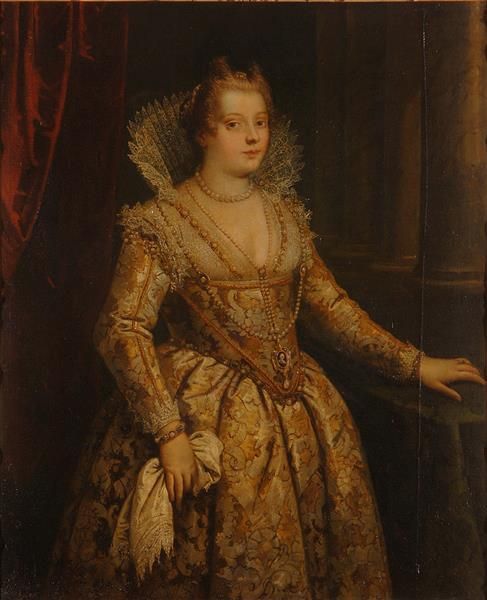

Around the same time, at the very end of 1500s, the extremely low cut bodice fashion enters rest of Europe. The low cut style was present in the bodices of all classes, but the nipple was really only an aristocrat thing. The lower classes would cover their breasts with a partlet, that was not sheer. Bare breast was ironically from our perspective a show of innocence, youthful beauty and virtue, and to pull off the style with respect, you also had to embody those ideals. Lower class women were considered inherently vulgar and lacking virtue, so a nipple in their case was seen as indecent. Bare boobs were also a sort of status symbol, since the upper class would hire wet nurses to breastfeed their children so they could show of their youthful boobs.
Covering partlets and bodices were still also used in the first decade of 1600s by nobles and the nip slip was mostly reserved for the courtly events. The first image below is an early example of English extremely low neckline that certainly couldn't contain boobs even with a bit of movement from 1597. The 1610s started around 5 decades of fashion that showed the whole boob. The first three were the most extreme. Here's some highlights: The second image is from 1619.
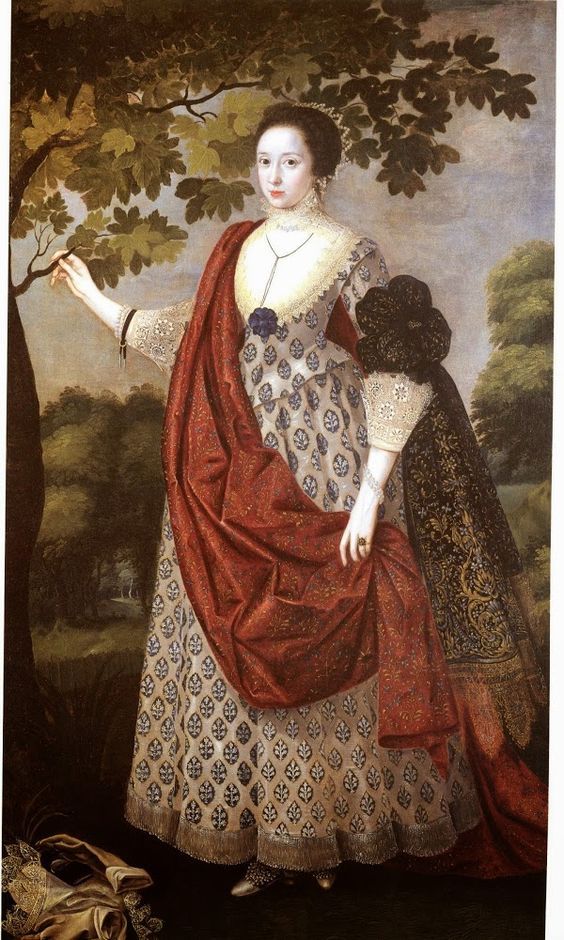

Here the first, very much showing nipples, from c. 1630. The second from 1632.
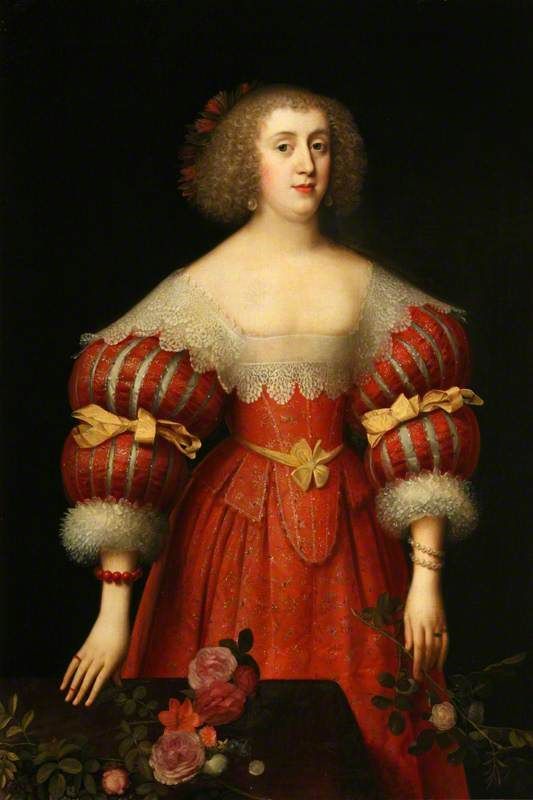
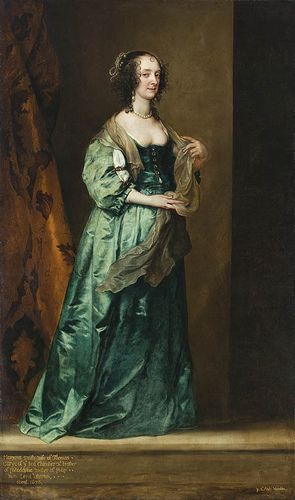
The neckline would slowly and slightly rise during the next decades, but nip slips were still expected. Here's an example from 1649 and then from 1650-55. In 1660s the neckline would get still slightly higher and by 1870s it was in a not very slippable hight. The necklines would stay low for the next century, though mostly not in boob showing territory, but we'll get there. But I will say that covering the neckline in casual context was expected. Boobs were mostly for fancy occasions. It was considered vain to show off your boobs when the occasion didn't call for it and covering up during the day was necessary for a respectable lady. You wouldn't want to have tan in your milk-white skin like a poor, and also they didn't have sun screen so burning was a reasonable concern.

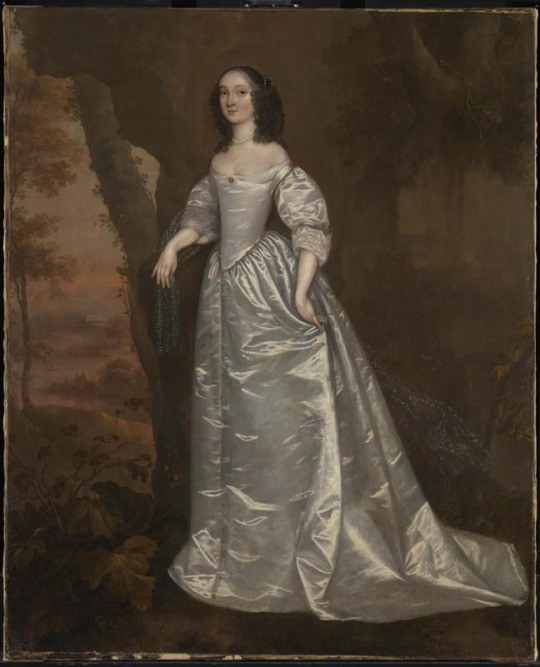
1720s to 1740s saw necklines that went to the nip slip territory, though they didn't go quite as low as 100 years earlier. The nipple was present in the French courtly fashion especially and rouging your nipples to enhance them was popular. Émilie Du Châtelet (1706-1749), who was an accomplished physicist and made contributions to Newtonian mechanics, was known in the French court to show off her boobies. An icon. Here she is in 1748. Here's another example from this era from 1728.
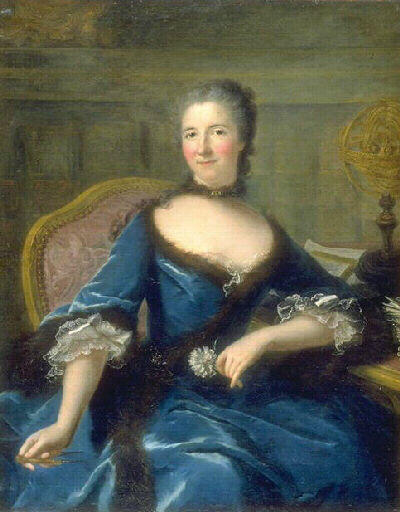
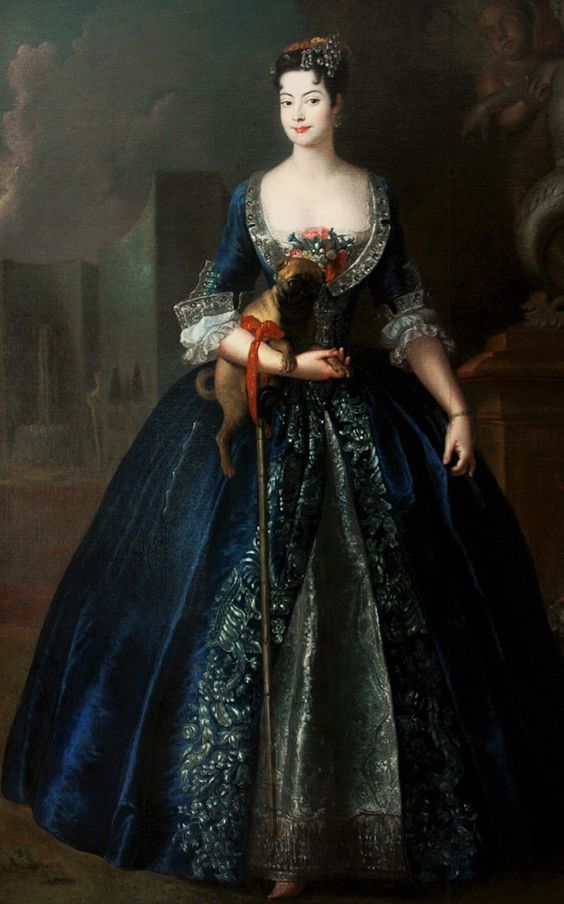
The Rococo neckline never got high, but in the middle of the century it was less low till 1770s when it plunged into new lows. In 1770s the fashion reached a saturation point, when everything was the most. This included boobs. The most boob visible. There was a change in the attitudes though. The visible boob was not a scandal, but it was risque, instead of sing of innocent and did cause offense in certain circles. I think it's because of the French revolution values gaining momentum. I talked about this in length in another post, mostly in context of masculinity, but till that point femininity and masculinity had been mostly reserved for the aristocracy. Gender performance was mostly performance of wealth. The revolutionaries constructed new masculinity and femininity, which laid the groundwork for the modern gender, in opposition to the aristocracy and their decadence. The new femininity was decent, moral and motherly, an early version of the Victorian angel of the house. The boob was present in the revolutionary imagery, but in an abstract presentation. I can't say for sure, but I think bare breasts became indecent because it was specifically fashion of the indecent French aristocracy.
Here's example somewhere from the decade and another from 1778. The neckline stayed quite low for the 1780s, but rose to cover the boobs for the 1790s.

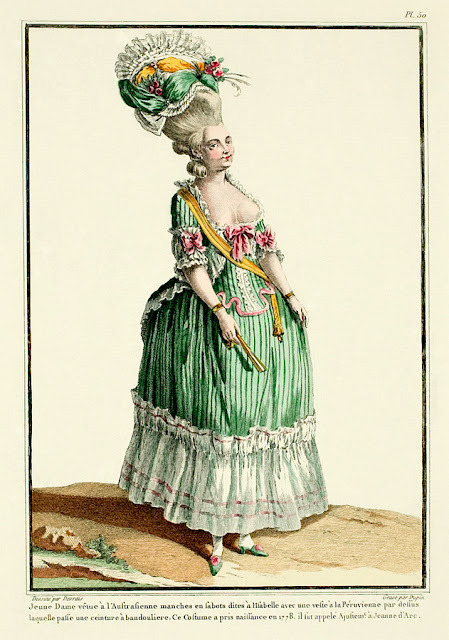
The nipple didn't stay hidden for long but made a quick comeback in the Regency evening fashion. It was somewhat scandalous by this point, and the nipple and sheer fabrics of the Regency fashion gained much scorn and satire. The styles that were in the high danger nip slip territory and those that allowed the nipple to show through fabric, were still quite popular. The sleeves had been mid length for two centuries, but in 1790s they had made a split between evening and day wear. The evening sleeves were tiny, just covering the shoulder. Showing that would have been a little too much. Like a bare boob? A risque choice but fine. A shoulder? Straight to the horny jail. (I'm joking they did have sheer sleeves and sometimes portraits with exposed shoulder.) But long sleeves became the standard part of the day wear. Getting sun was still not acceptable for the same reasonable and unreasonable reasons. Day dresses did also usually have higher necklines or were at least worn with a chemisette to cover the neckline. Fine Indian muslin was a huge trend. It was extremely sheer and used in multiple layers to build up some cover. There were claims that a gust of wind would render the ladies practically naked, though because they were wearing their underclothing including a shift, which certainly wasn't made from the very expensive muslin, I'm guessing this was an exaggeration. Especially though in the first decade, short underboob stays were fairly popular, so combined with a muslin, nipples were seen. Here's an early 1798 example of exactly that. The short stays did disappear eventually, but in 1810s the extremely small bodices did provide nip slip opportunities, as seen in this 1811 fashion plate.
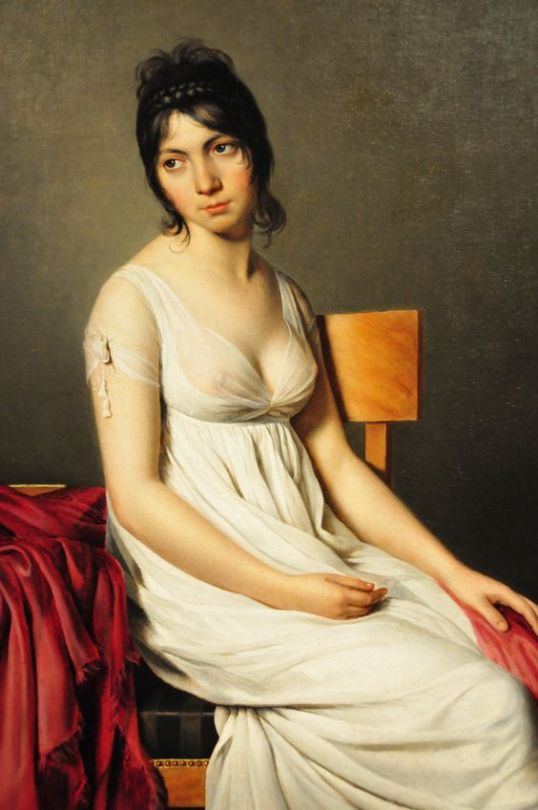
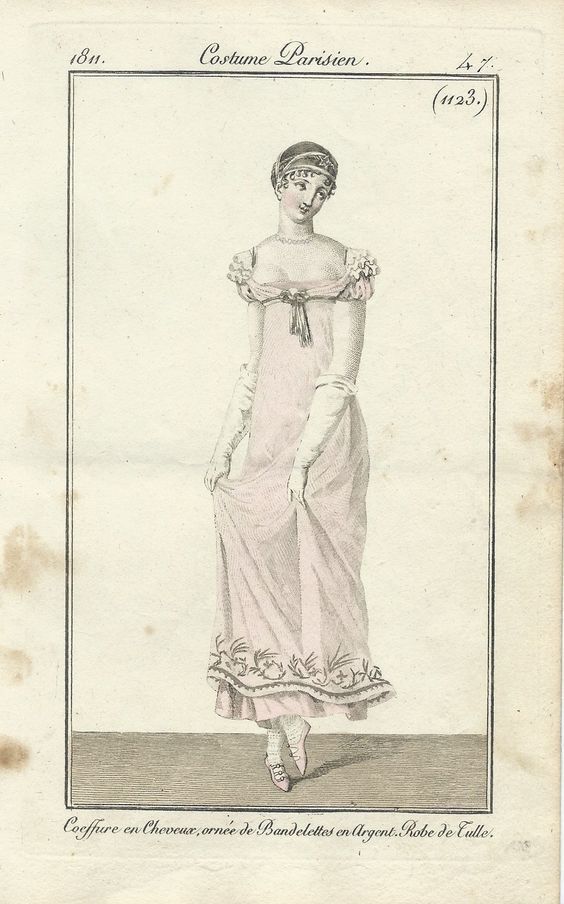
Victorian moralizing did fully kill the nip slip, though at least they were gender neutral about it. The male nipple was just as offensive to them. In 1890s, when bodybuilding became a big thing, bodybuilder men were arrested for public indecency for not wearing a shirt.
#there was also the new femininity aspect to regency nipple which had to do with breastfeeding becoming fashionable among upper class#it's about the whole motherly thing that came with the french revolution#i can't remember the book i read it from so i didn't go into it because i couldn't remember the details lol#but it did definitely have an effect to the fashion and to the perception of nipple#historical fashion#fashion history#history#dress history#fashion#answers#painting#fashion plate#renaissance fashion#elizabethan fashion#rococo fashion#baroque fashion#regency fashion#will tumblr prove itself to be again more prudish than elizabethans and label my post as mature content?#remains to be seen
503 notes
·
View notes
Text
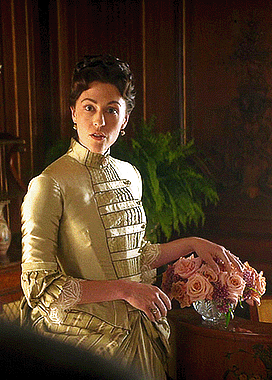

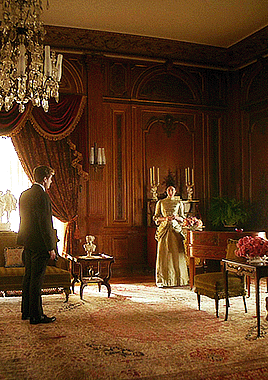
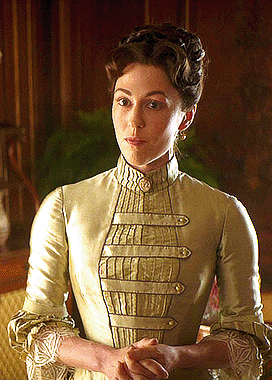
THE GILDED AGE (2022-) + ART [9/∞]
🌸 Kelley Curran as Enid Turner Winterton in S2E5: Close Enough to Touch
🌸 Women's fashion plate (1882) from the Metropolitan Museum of Art Libraries
#the gilded age#costumeedit#thegildedageedit#thegildedagesource#fashion plate#costume design#history of fashion#historical fashion#the gilded age + art#💮💮#*meine#gilded age#victorian era#1880s#19th century#costumes#fashion#kelley curran#enid turner winterton
168 notes
·
View notes
Text

A typical 1832 throuple from Journal des Dames et des Modes, showing the sexual dimorphism of the species.

Although the male is much smaller and relatively drab (despite his yellow gloves and patterned waistcoat); he will demonstrate his fitness as a mate with numerous dances.
#Eighteen-Thirties Thursday#1830s#fashion history#historical men's fashion#romantic era#1832#fashion plate#fashion#journal des dames et des modes#evening dress#day dress
167 notes
·
View notes
Text




♡ Pictures ♡ decorated with fabrics
#new post#historical fashion#fashion#fashion history#aestethic#coquette#victorian era#victorian england#victorian#edwardian#pictures decorated with fabrics#vintage#pretty bows#pink#pink aesthetic#blue#white aesthetic#parasol#fashion plate
176 notes
·
View notes
Text
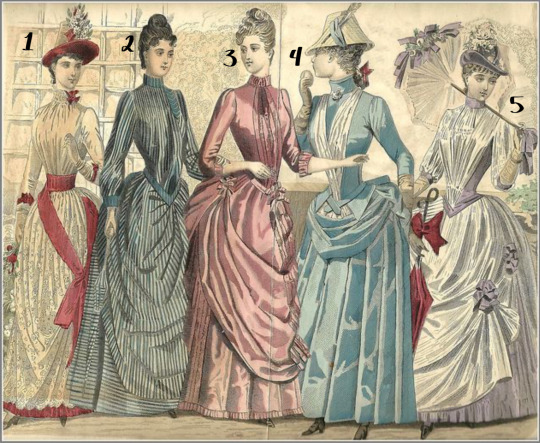
submitted by @downtonbaddie7 💙🩷
#historical fashion poll submission#historical fashion polls#fashion poll#historical dress#historical fashion#dress history#fashion history#fashion plate#19th century#19th century fashion#19th century dress#late 19th century#1880s fashion#1880s dress#circa 1880#1880s#circa 1888#1888
66 notes
·
View notes
Text

Les Modes : revue mensuelle illustrée des arts décoratifs appliqués à la femme, no. 3, vol. 1, 1 mars 1901, Paris. Robe de dîner (Modèle Rouff). Cliché Reutlinger. Bibliothèque nationale de France
ROBE DE DINER (Modèle Rouff). — Robe de dîner en armure étincelle rose très pâle. Le corsage à pointe Louis XV, agrémenté de nœuds diamantés se fondant dans le fouillis des paniers de mousseline de soie. Le devant et le bas de la jupe incrustés de point d’Argentan.
DINNER DRESS (Rouff). — Very pale pink sparkle weave dinner dress. The Louis The front and bottom of the skirt inlaid with Argentan stitch.
#Les Modes#20th century#1900s#1901#periodical#fashion#fashion plate#color#description#bibliothèque nationale de france#dress#gown#Reutlinger#photograph#Modèles de chez#Maison Rouff#march color plates#embellished march color plates
252 notes
·
View notes
Text

1895
#historical fashion#fashion#historical#history#historical clothing#historical dress#long dress#victorian#victorian era#victorian fashion#victorian pattern#victorian clothing#victorian history#victorian dress#textile#textiles#art#artwork#fashion plate#fashion dress#1800s dress#late 1800s#1800s fashion#1800s#circa 1895#19th century fashion#late 19th century#19th century#1895 sleeves#dress
2K notes
·
View notes
Text
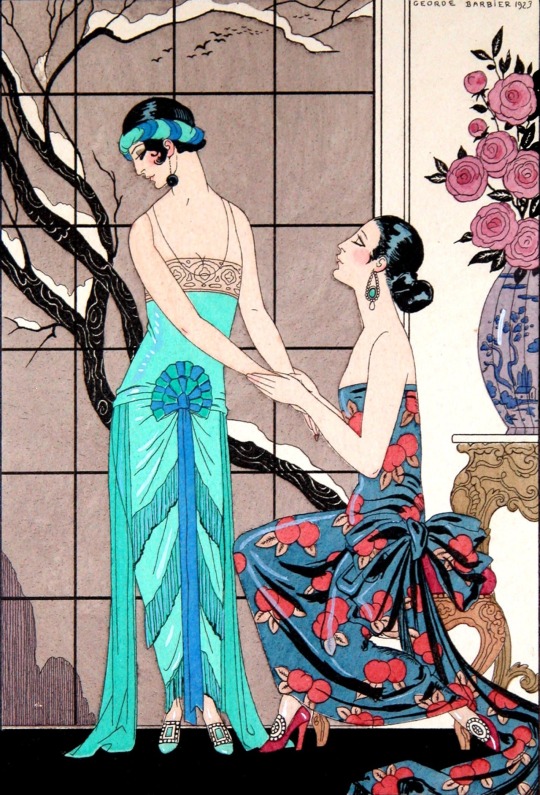
George Barbier, L'Aveu Difficile (The Difficult Confession), Falbalas et Fanfreluches, almanach des modes presentes, passees & futures, 1923
#george barbier#illustration#1923#Fashion Plate#painting#mode#fashion#1920s#20s#barbier#art deco#vintage#1923 illustrations#art#paris#chic#parisien mode#parisien fashion#parisien chic#lesbians#art deco illustration#lgbt#confession#confessions#fashion illustration
245 notes
·
View notes
Text

Fashion plate of a redingote (frock coat) design featuring big bold lapels and a slutty waistcoat window, La Mode, c. 1820s
#the 19th century gentleman's answer to the anime girl cleavage cutout#also great for casual Eye of Sauronbounding#19th century#1800s#1820s#1820s fashion#19th century fashion#men's fashion#menswear#redingote#frock coat#19th century art#19th century illustration#fashion#fashion plate#La Mode
341 notes
·
View notes